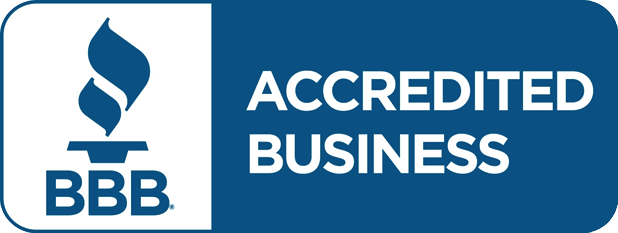For nurses who wish to transition to these areas, they have to have a strong set of assessment skills, good critical thinking skills and the ability to improvise as needed. They also need to be self-starters, and able to work independently. There is always a backup 24/7 of professional staff to assist with questions and instructions. The solid rule is to never do something you haven’t done before without supervision! A solid background at least one year of hospital experience in med/surg or even ER or ICU is recommended.
The paperwork can be a challenge!
The paperwork/documentation in these areas is by far one of the biggest challenges and honestly drives many away. But those who take the time to learn and understand the purpose of the paperwork can usually get through it quickly. The major reimbursement for this field is Medicare or Medicaid and there are a host of regulations to qualify for skilled home care or hospice. The nurses and other professionals become the eyes and ears for the physician and the payment source. The documentation serves as evidence of the skilled need, the homebound status and the outcome – the progress towards measurable goals whether that be to improve on home health or to decline and eventually pass away on hospice. Private insurances may also cover skilled home care but may have limits on the number of visits that can be made so it’s necessary to spend more time in a visit and educate patients/caregivers more quickly. They also often require prior authorization in the beginning and documentation of progress to authorize more visits.
In home health, the often-dreaded OASIS document must be completed at specific intervals to ensure there is a skilled need; one that requires the skill and education of a nurse or therapist to complete or teach to the patient or caregiver. The patient must be homebound for the duration of care (not necessarily permanently.) Home health care is usually a continuum of care from hospitalization, or in lieu of hospitalization, for an acute illness, injury or surgical intervention.
Why the OASIS?
The OASIS (Outcome and Assessment Information Set) measures the patient’s functional abilities, social and cognitive abilities and the clinical aspect. It is in fact, a huge example of the nursing process in action as it guides the nurse, the therapist and ancillary professionals in developing and carrying out the plan of care. It helps set the measurable goals and at milestones when it is repeated it shows the outcomes and specific progress towards the measurable goals. The clinical note at each intermittent visit supports the information in the OASIS.
Combined, it all paints a big picture of the patient, the goals and the outcomes. The data is collected and transmitted to Medicare and used to support statistics that are released back to the agency and the public about the successes and failures of an agency to provide the best quality care and outcomes. Consumers along with facilities and physicians can use this data to decide what home health agencies will provide the best care and outcomes for their patients.
Well-rounded skills needed
Nurses in skilled home health care provide typically a “jack of all trades” realm of care and are experts at innovation. The general rule is to get in, educate and step back. That might be discharging or, it might be just making a few more supervisory visits to ensure the patient or caregiver is continuing to perform the care needed and goals are being met. Nurses educate patients and caregivers in all aspects of the disease process, medications, non-pharmacological aspects of care, diet, hygiene, and lifestyle changes that need to be made to ensure safety and/or compliance with treatment options to improve their health status.
Nurses in home health care do a lot of teaching about medications. This includes meds the patient may have been on for years. How many times has a patient said, “I take a little heart pill?” Or described their medications as “the vitamins the doctors gives me?” Patients often have no idea what their medications are, why they take them, what side effects they may have, and what signs and symptoms they need to report to the physician. Education is an essential part of the home health nurse’s role.
Nurses work a lot with patients who have had an exacerbation of a chronic illness such as diabetes, COPD, CHF or kidney disease because they don’t understand their medications, dietary restrictions and how to read labels, and the kinds of lifestyle changes they need to make. The nurse will instruct in symptom management, prevention of complications and when to report to the MD. Visits are typically 45 minutes to an hour long 1-3 times per week for a few weeks with a tapering frequency to see how well they learn and improve.
Utilizing other disciplines
A home health aide can be assigned to assist in bathing, grooming and personal assistance with minimal housekeeping related only to the patient. The aide is to instruct the patient and caregiver in taking over these tasks when the nurse or therapist discharges the patient. The nurse supervises the home health aides and adjusts the plan of care as the needs of the patient change.
Types of patient care
Nurses can be involved in tasks such as IV therapy, blood draws for therapeutic levels and teaching associated med changes, wound care from simple skin tears to complex care that requires devices such as wound vacs as ordered by the overseeing physician. Other care can include managing TPN, G-tube care and feeding, managing Foley catheters and instructing caregivers in safe transfers and caring for bedbound patients. Some agencies provide chemotherapy and have chemo certified nurses administering the medications. It’s all a combination of teaching and supervising patients and caregivers in the care.
Physical, occupational and speech therapists provide care in the home also as prescribed by the overseeing physician. Medical social workers provide resources and education about social issues, financial planning and helping to advocate for the patient with feuding family members.
Palliative and Hospice Care
Palliative care is an extension of skilled home care that focuses on managing symptoms, preventing complications, and comfort care for patients primarily suffering from late stages of chronic pain or managing symptoms for patients undergoing cancer treatments such as chemo or radiation. Some think of palliative care as a go-between stage between restorative care in home health and end-of-life comfort care in hospice because it does overlap in many ways, but the patient does not need to be terminally ill. It requires a lot of compassion and patience on the part of the health care professionals. Not all nurses are cut out for palliative or hospice care.
Hospice care involves extreme levels of compassion and patience. Education of caregivers and family members about end-of-life care is vital. Patients can start hospice care as soon as they meet the criteria of having a terminal diagnosis with less than 6 months to live if the disease progresses in an expected terminal trajectory. Sometimes hospice patients live longer, but they must continue to show a steady decline in physical status; otherwise, they graduate out of hospice. End-of-life comfort care involves managing symptoms such as pain, shortness of breath, confusion, agitation, restlessness, incontinence and a decline in mobility.
As end-of-life nears, patients usually become incontinent, eat less, often require chopped foods or a pureed diet and thickened liquids to prevent choking. All of this is more time-consuming for caregivers. The patients frequently require oxygen and titration of medications to ease pain and other symptoms. Caregivers and family members, as well as more alert patients, find the bereavement/spiritual care helpful and supportive. Social workers are part of the team to advocate for the patients and provide support. They also help families arrange for 24/7 supervision and care as well as make final arrangements and understand how to bring affairs into order. A nurse practitioner may participate in the role of a team physician or there will be a doctor (MD or DO) on staff to assist with symptom control and other medical issues. There will also be a medical director for the hospice to oversee these team members and patient needs.
Teamwork and care planning
Care planning is an essential part of the nurse’s role in these areas. Teamwork is essential and nurses need to have a good understanding of each member’s role and how and when to best utilize them. The nurse manages the case, but decisions are made by the team. There may be an LVN/LPN on the team to assist with some of the visits but must be versed in the exact patient needs for that visit and expected outcome. The LPN/LVN provides feedback and suggestion for the patient’s changing needs, by the RN will have the final say in what changes will be brought to the interdisciplinary team for approval.
Many nurses have come to love their roles in skilled home health, palliative care or hospice and some work in more than one area. Continuing education courses are an important part of the nurse’s responsibilities as patient populations can be more diverse and complex than might be encountered in a specific hospital department.



